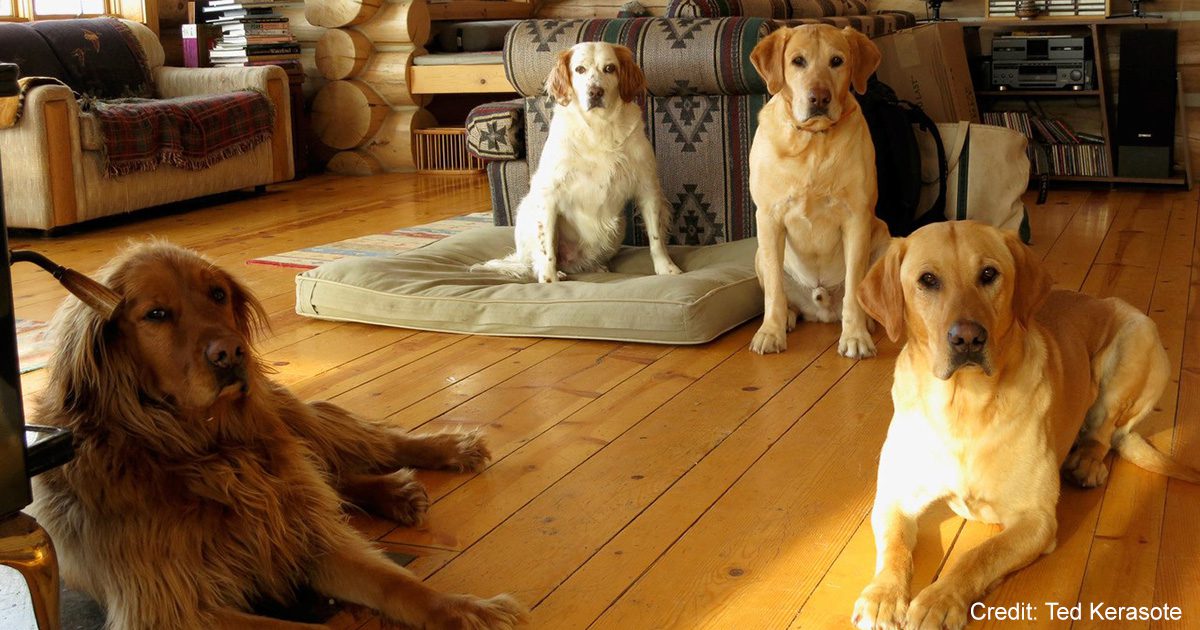
May 20, 2024 Dog Longevity: The True Value of a Dog Year!
Ted Kerasote is an outdoorsman and author who has written three charming and insightful books about the human-dog relationship – Merle’s Door (2007), Pukka, The Pup after Merle (2010), and Pukka’s Promise (2013). Pukka’s Promise relates the story of Kerasote’s search for a dog that would live a long and healthy life. Dr. Bruce Fogle, a veterinarian in London who has written many books about companion animals and is one of the founders of the study of the human-animal bond, commented as follows on Pukka’s Promise, “Ted Kerasote gently and intelligently questions our fixed notions about living with dogs. Anyone who reads Pukka’s Promise can’t help but become a better dog person. I’d like it to be compulsory reading for all practicing vets and veterinary students.”
 A recent British study of dog longevity by the Dogs Trust (a British charity) provided data on the average lifespan of 584,734 dogs encompassing 155 dog breeds. The study sample was assembled from breed registries, pet insurance companies, veterinary companies and other sources. The wide range of sources increases confidence that the results might reasonably represent Britain’s 6 million pet dogs. The extensive study sample also increases confidence in the average lifespan data for each breed.
A recent British study of dog longevity by the Dogs Trust (a British charity) provided data on the average lifespan of 584,734 dogs encompassing 155 dog breeds. The study sample was assembled from breed registries, pet insurance companies, veterinary companies and other sources. The wide range of sources increases confidence that the results might reasonably represent Britain’s 6 million pet dogs. The extensive study sample also increases confidence in the average lifespan data for each breed.
According to the study, average canine lifespans ranged from 15.4 years for the Lancashire Heeler (weighing 9 to 17 pounds) to 5.4 years for Caucasian Shepherds (a dog weighing between 100 and 175 pounds). The average lifespan of a Labrador Retriever (weighing 55-75 pounds) in the study was 13.1 years. The study noted that small dogs and dogs with longer noses tended to live longer than larger dogs and dogs with short noses (e.g., dogs with flattened features, such as pugs and French bulldogs). It has long been recognized that small dogs live longer and that brachycephalic dogs (dogs with flattened faces) have more health problems than dogs with normal noses. Across all dogs, the median lifespan was 12.5 years, with small breeds living for 12.7 years on average, compared with 11.9 years for large breeds. Small, long-nosed breeds lived an average of 13.3 years, while large, flat-nosed breeds lived an average of 10.7 years.
It has generally been thought that purebred dogs had shorter lifespans than crossbreed dogs. However, this study reported that the data showed the opposite; purebred dogs lived an average of 12.7 years, while crossbreed dogs lived for an average of 12.0 years. The authors of the British study caution that average breed lifespan data may be affected by environment and location and that their study featured only British dogs. The average lifespan of particular breeds may vary in other countries where the genetic makeup of specific breeds and environmental influences may differ.
A dog aging research project in the US is located at the University of Washington in Seattle. The project is directed by Daniel Promislow, D.Phil. and Matt Kaeberlein, Ph.D. Kate Creevy, DVM, is the Chief Veterinary Officer. The project relies on citizens enrolling their dogs, including information on dog health and treatment history. As of March 1, 2024, the project had enrolled over 50,000 dogs. The scientists on the project team have produced many publications, such as this 2019 study on dog body size, inbreeding and lifespan and this report on the domestic dog as an exceptionally rich source of genetic, morphological and environmental data on mammalian aging. For example, unlike mammals where larger species tend to have longer average life spans, the reverse is the case for dogs. Smaller dogs live longer (almost twice as long) as larger dogs. The Dog Aging Project has also reported that exercise slows cognitive decline in our canine companions.

Pukka snoozing after a hard day of play
Over time, the Dog Aging Project may identify the specific genetic influences governing dog lifespans and provide some hope for dog parents who, like Kerasote, feel the time we share with a particular canine companion is far too short. We would note that Kerasote just informed us that Pukka celebrated his 15th birthday on March 18, 2024, and was, when Kerasote sent us this update, snoozing behind Kerasote’s chair. Pukka is already two years older than the average Labrador Retriever in the British study and is living proof of the benefits of Kerasote’s search for a pup from a long-lived retriever breeding line that is subsequently nurtured in a healthy, active environment.


